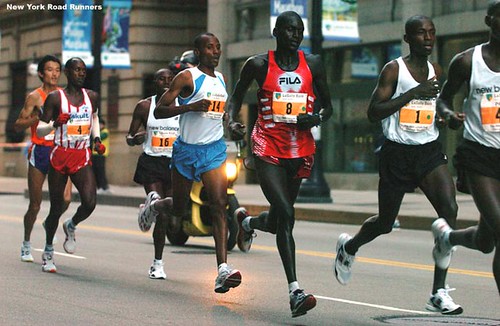Continuous Training
"Continuous training is when an athlete exercises in a steady aerobic way and interval training is characterised by repetitions of work with a recovery period following each repetition."
1. Continuous Run - 25 minutes:
In this training session we ran around the field in circuits for 25 minutes. We worked up our speed to the highest steady speed we could run for the duration of the run.
Advantages
- Not hard work
- Good test of CV Endurance
- No specific training needed
Disadvantages
- No training in the aneaorbic training zone
- Only test CV Endurance
- BoringBoring

A sportsman who would use this sort of training would be a long distance runner, who needs to run long distances in there sport. You wouldn't need this sort of training if you were a games player as a better training routine for them would be the continuous cross training.

2. Cross Training - 15 minutes:
Equipmentused: Skipping rope, 8kg kettle bell
- 5 Burpies
- 10 Kettle Swings
- 15 Skips
- 4 shuttle runs
- 4 shuttle runs
Components of fitness used: CV Endurance, Muscular Endurance, Speed, Explosive Strength, Co-Ordination, Flexibility
AMRAP's - 8 rounds, 5 burpies, 7 kettle swings
Advantages
- Develops a lot of components of fitness.
- Not likely to be bored with the training session.
Disadvantages
- It's harder work then the steady paced continuous run.
- Need to be taught certain movements (skipping, kettle bell swings)

A sportsman who would use this would be a sportsplayer. Somebody who's playing football, netball, hockey or rugby would need more of this training as they don't stay at a steady heatrtbeat over the duration of the game. They also need more componens of fitness to develop, such as strength, speed and co-ordination which are needed for sports players unlike long distance runners.

No comments:
Post a Comment